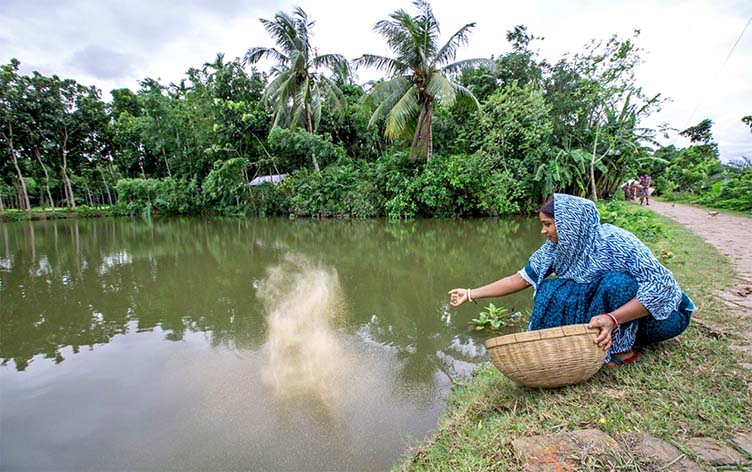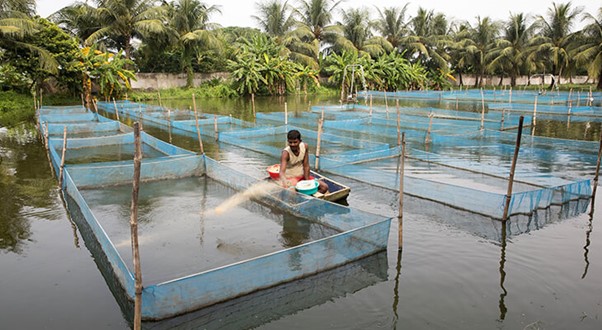
Bangladesh continues to keep its position as the third-ranked producer of freshwater fish and the fifth-ranked producer of aquaculture fish globally. Furthermore, Bangladesh is ranked 25th in the world’s top 25 nations for the marine fish and seafood production.
Bangladesh attains self-sufficiency in fish production and supplements of the population’s total daily animal protein intake. Thanks to the fisheries industry, which is presently making a significant contribution to meet the food requirements of the country’s growing population, creating jobs, reducing poverty, and bringing foreign currency.
To raise fish production and to satisfy the expanding population’s demand for protein, producers in the country have long been using antibiotics and pesticides to cultivate fish and hormones in artificial fish breeding, thereby jeopardizing food safety.
Infections caused by bacteria, viruses, fungi, and parasites commonly affect aquaculture productivity in Bangladesh. So, fish farmers routinely use aqua-chemicals such as antibiotics and pesticides to reduce the prevalence of diseases in fish farming. In aquaculture, numerous antibiotics, including oxytetracycline, amoxycillin, and sulphadiazine-trimethoprim, are frequently used for treating or preventing fish diseases. These are also used to enhance water quality, the yield of fish culture ponds, and also function as growth stimulants.
The application of these compounds has drawn criticism for the potential adverse effects on the environment and human health, despite aiding in the expansion and development of the aquaculture industry.
“Undoubtedly, antibiotics have negative effects. In our nation, aquaculture fish producers utilize antibiotics carelessly,” said Benoy Kumar Barman, senior scientist at WorldFish.
According to Mohammad Habibur Rahman, the Department of Fisheries’ chief scientific officer (fisheries inspection and quality control), antibiotics carry health risks. For this reason, the department constantly requests farmers not to use antibiotics and pesticides in fish farming, he added.
Moreover, hormones are increasingly used in conjunction with antibiotics to produce fish. In the early 1980s, agricultural extension projects funded by the UN’s Food and Agriculture Organization started intensive fish farming in Bangladesh.
One thousand fifty-six fish hatcheries produce 98% of the fish fry through intensive fish farming method. These hatcheries have been using induced breeding techniques to boost fish production.
Induced breeding is a technique in which fish, that do not reproduce in still bodies of water, will do so while being influenced by hormones or stimulants. Artificial reproduction, also known as induced breeding, is administering stimulants, hormones, or pituitary extracts to fish larvae to induce controlled spawning away from the natural environment.

Fish farming practices that involve hormones run the risk of endangering human and environmental health and other factors that are influenced by hormones. Hormone exposure can result in endocrine abnormalities in people, including early puberty in children, increased bone aging, detrimental effects on growth, altered sexual characteristics, and the onset of cancer.
Habibur Rahman stated that the department has already instructed all hatcheries not to apply hormones in fish breeding because it harms humans and the environment.
The contamination of water sources with toxins has also grown to be a serious problem. With 6,000 major and medium-sized industries and 24,000 small ones, Bangladesh’s industrial expansion has accelerated recently. These industries frequently discharge untreated refuse and chemicals into open bodies of water, such as rivers, wetlands, and canals.
These contaminants accumulate in common fish and bivalve species due to water body contamination. These harmful heavy metals, released into the aquatic environment have the potential to biomagnify and enter the food chain, where they may cause a variety of health problems.
Recently, aquaculture fish has acquired a bad reputation as a health hazard medium. Intensive aquaculture, poor farming practices, inadequate hygiene, and contaminated waters enhance the risk of disease in fish and the use of antibiotics.
Antibiotics, growth hormones, and insecticides are prohibited by law in animal and fish feed in Bangladesh. But in the lack of adequate regulations, there is a risk that many antibiotics, including medically essential ones, will become available over the country for purchase.
In addition, research indicates that 88% of fish farmers lack of adequate knowledge of antibiotic use, and 81% are oblivious to the optimal chemical concentrations for fish farming. Therefore, appropriate monitoring programs and fundamental education are required to resolve this critical issue.
Jaber Bin Abdul Bari
Department of Oceanography, NSTU




